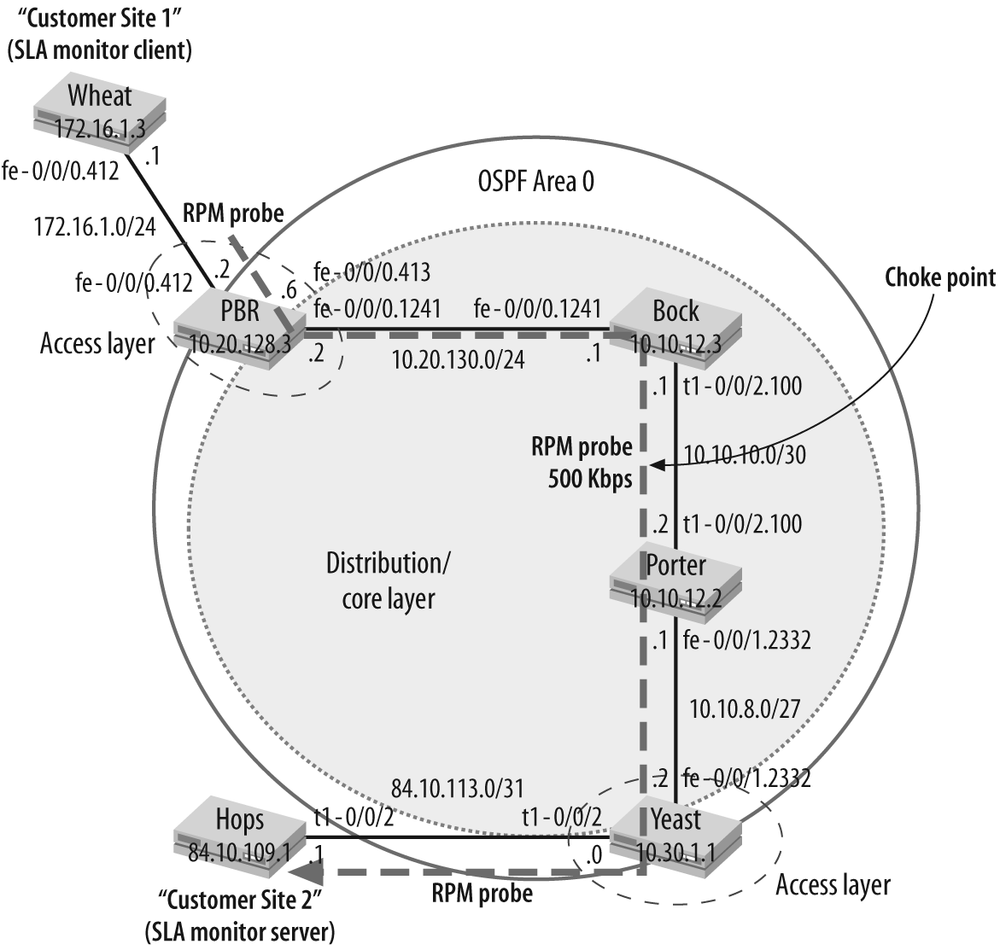DiffServ CoS Deployment and Verification
It was a long time getting here, but you have arrived, and you are now ready to rush headlong into a JUNOS software-based CoS configuration and verification lab. Figure 9-16 provides the network topology for the IP DiffServ CoS deployment scenario.

Figure 9-16. DiffServ CoS deployment topology
There are a few things to note in Figure 9-16. The test topology is somewhat simplified, and the test bed lacks the external test equipment needed to accurately measure and verify data plane performance. The first issue is not really a problem, because a workable CoS configuration is somewhat repetitive, basically involving the need to put the same configuration bits, consistently, in lots of places. As such, any network with a clearly marked edge and distribution/core devices services as a workable model with which to demonstrate CoS configuration and operational verification.
The subset of routers selected for the CoS topology was chosen in large part because of the (relatively) low-speed T1 interface interconnecting Bock and Porter. We noted previously that CoS matters only when link utilization begins to approach 80%. Obviously, with a given offered load, a slower link will exhibit higher utilization than a faster oneâconsidering the lack of external traffic generators, it will be hard enough to congest a T1 link, let alone a 100 Mbps Fast Ethernet. ...
Get JUNOS Enterprise Routing now with the O’Reilly learning platform.
O’Reilly members experience books, live events, courses curated by job role, and more from O’Reilly and nearly 200 top publishers.

